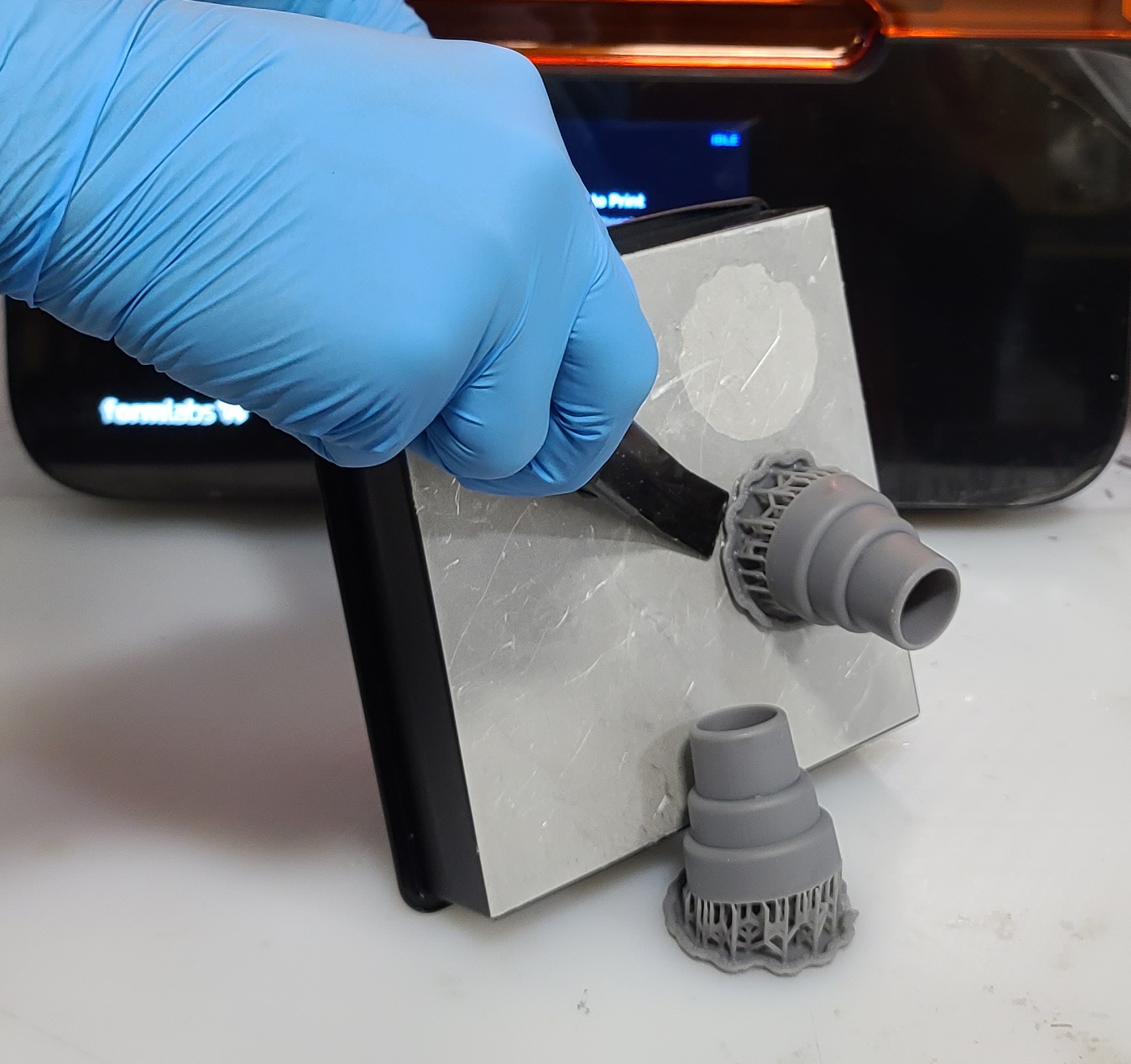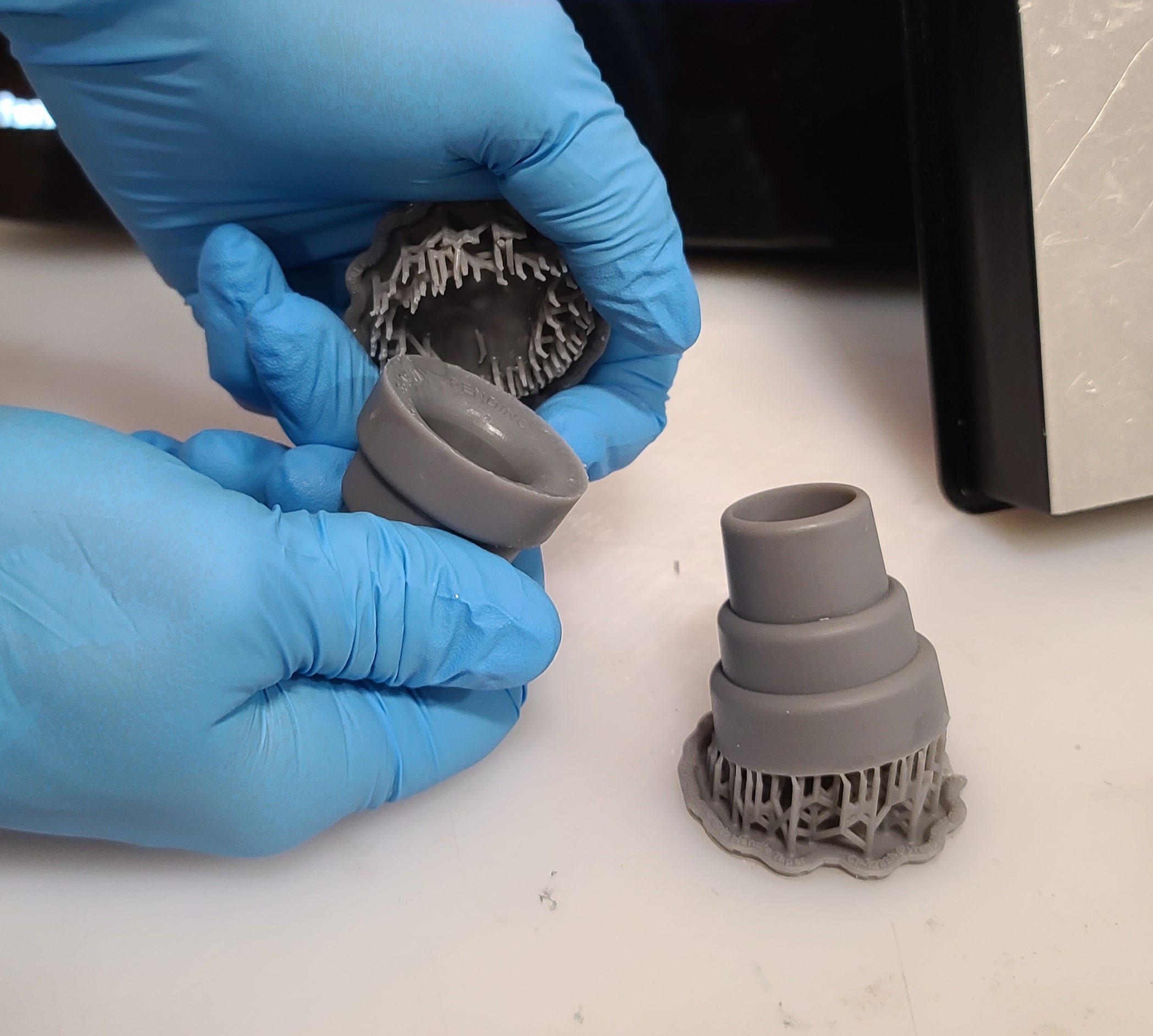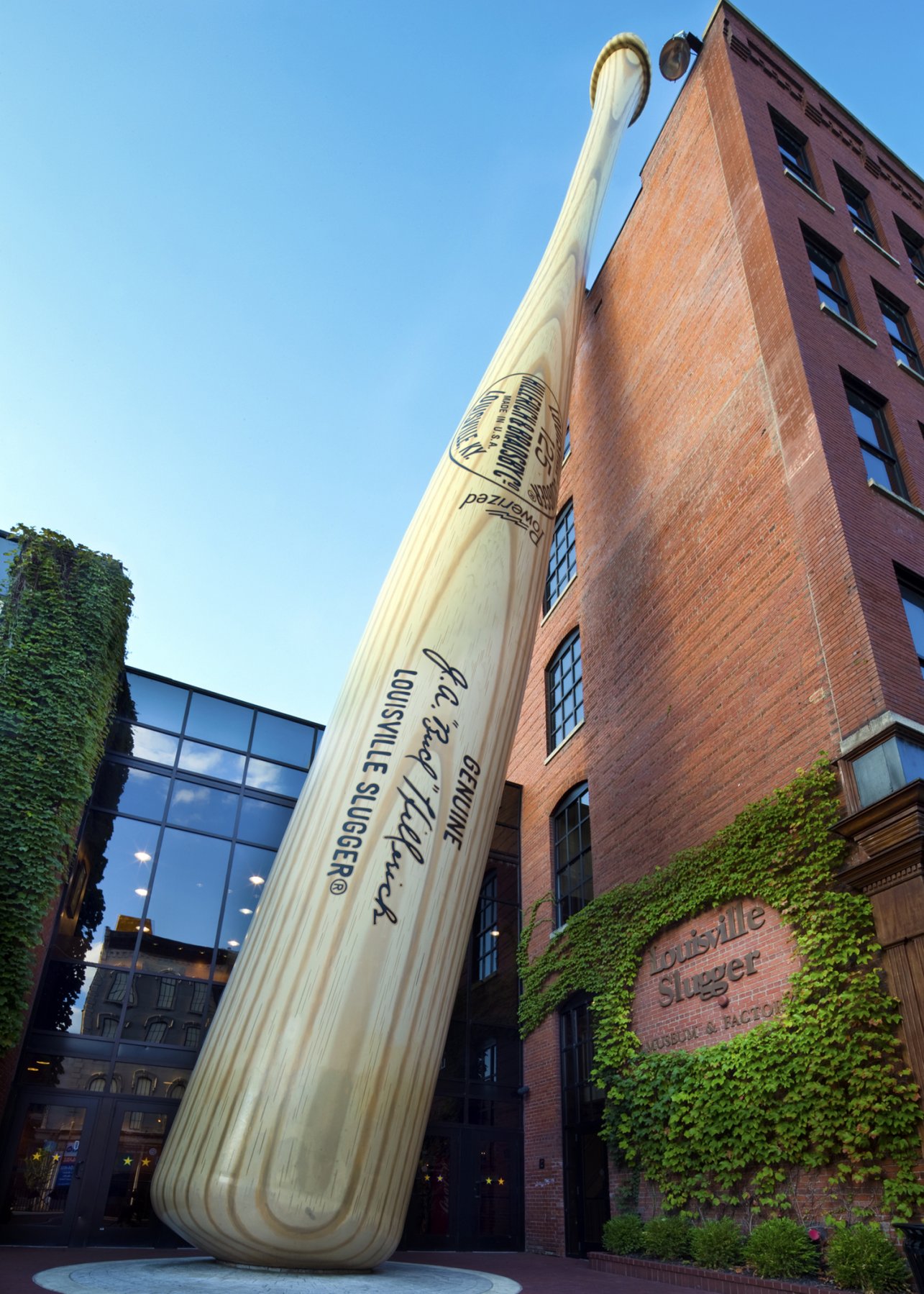In 2022, historical bat brand Louisville Slugger revealed a new strategy to optimize its product, combining digital simulation for the design process and 3D motion capture technology for comprehensive baseball and softball hitting analysis. Now the brand – owned by sports giant Wilson – shares how designers and engineers at the Louisville Slugger Innovation Center in Roseville, California, use Formlabs’ industrial quality desktop Form 3+ printers to advance equipment design for some of its newest bats, like its one-piece-alloy BBCOR Atlas.
By merging traditional manufacturing methods like CNC milling, lathes, and wood patterning with modern tools like 3D printing, Slugger makes its bat manufacturing process significantly faster. As a result, it can deliver innovative new equipment designed to improve athlete analytics without long wait times between outsourced iterations.
 3D printing is helping the Louisville Slugger innovation team design better bats. Image courtesy of Louisville Slugger/Wilson.
3D printing is helping the Louisville Slugger innovation team design better bats. Image courtesy of Louisville Slugger/Wilson.For Slugger Innovation Center Senior Simulation and Design Engineer John Steel, the key to creating prototypes and manufacturing aids for prototype designs lies in 3D printing, particularly the Formlabs Form 3 stereolithography (SLA) 3D printer. According to Formlabs, Steel’s background influenced his choice to use 3D printing technology. One of Steel’s previous jobs taught him to combine large industrial SLA and SLS 3D prints with traditional wood patterning techniques. He then worked at a product design startup where he used two Form 1+ machines to iterate rapidly.
At Louisville Slugger, Steel is again able to merge the traditional with the modern. “We’re able to rapidly produce prototypes for quick iteration and testing. We use it every week, and if we’re working through a new design, we’ll iterate on it every day. 3D printing is a great tool to reduce the amount of time it takes to get to market. Prototyping the initial design, to problem-solving the final manufacturing,” exemplifies Steel.
 3D printing is helping the Louisville Slugger innovation team desing better bats. Image courtesy of Louisville Slugger/Wilson.
3D printing is helping the Louisville Slugger innovation team desing better bats. Image courtesy of Louisville Slugger/Wilson.The speed of iteration allows the Slugger team to release new products regularly and keep up with the demand for bats suitable for all different levels of play. This is ideal for a market that keeps growing, mainly thanks to mass customization and personalization which has slowly been gaining importance in the baseball equipment market in the U.S. So even for a brand with such a storied history as Slugger, the competition is fierce, leaving Steel and the innovation team needs to be ahead of the curve constantly. Form 3 and continuous iteration help them get those ideas to the next stage faster.
 Bat grip prototypes. Image courtesy of Louisville Slugger/Wilson.
Bat grip prototypes. Image courtesy of Louisville Slugger/Wilson.“I’ll have an idea, design it and send it to the printer in 30 minutes, then bring it to the next meeting. 3D printed visual aids are worth their weight in gold,” describes Steel. “3D printing improves team understanding of the product development process and can help eliminate any crossed wires down the road. Oftentimes when looking at 3D renderings, we lack scale. Printing parts helps when attempting to reference how something compares in size along with being able to test ergonomics and fitment into existing products.”
Although prototyping is the core use for Form 3, Steel uses the machine for other applications, including creating silicone molds and manufacturing aids. A mechanical designer and hands-on prototype builder, Steel illustrates how Form 3 allows his team to leverage many materials available for other processes. For example, forming mold positives in silicone to back pour in urethane, silicone, or epoxy. The molds are used to create final-stage prototypes that include all the eventual types of material, like urethane or epoxy, that will be used in the final, traditional manufacturing process (as seen in the image below).
 Louisville Slugger team makes silicone molds. Image courtesy of Louisville Slugger/Wilson.
Louisville Slugger team makes silicone molds. Image courtesy of Louisville Slugger/Wilson.Before, if the engineers wanted to get silicone parts made, they needed aluminum tooling. Now they can 3D print the positive geometry, then back pour in silicone, cut the silicone mold apart, and then use the resulting negative to create other types of parts, like functional prototypes, explains Formlabs. For the team, iterating the positive and practicing the silicone pour process can illuminate flaws in the design that would otherwise take weeks of waiting and testing to uncover when outsourcing.
“SLA has a very fine fidelity and holds tight tolerances. This not only provides us with parts within spec, but it also alleviates much of the post-processing required on the mold positive. When molding, you want as smooth of a surface finish as possible on your mold positive to ease part removal from the mold. Some texturing is okay, but the grooving caused by layer stack-up is where things get tricky and the quality of the Form print layers is never an issue. Plus, post-processing these materials is super easy,” says Steel.
Looking forward, Steel says he is working on expanding the number and range of ways to use 3D printing, including in manufacturing tools, which he deems even more valuable than creating parts.
“Good equipment makes the sport more fun to play, and that’s what the Innovation Center is all about. We’re using technology like the 3D printers to keep improving, and we’re constantly looking at what’s next,” concludes Steel.
Since the Hillerich family’s first bats in the 1880s to its latest aerospace-grade carbon fiber designs, their famed Louisville Sluggers have dominated as the stick of choice for the greatest players ever. Some of the biggest names in the sport have relied on the bat’s cutting-edge heritage, like Jackie Robinson, Babe Ruth, Joe DiMaggio, Derek Jeter, and especially the first pro bat player ever to use Hillerich’s creation, Pete “The Louisville Slugger” Browning. With so much history, innovation, and dedication to sports, the brand is an ideal candidate for 3D printing. The technology is not only suited to sports in general but can enable the Slugger group to reduce time to market for new products, streamline its workflow, improve productivity, and help drive greater control over its manufacturing.
 Louisville Slugger Museum and Factory
Louisville Slugger Museum and FactorySubscribe to Our Email Newsletter
Stay up-to-date on all the latest news from the 3D printing industry and receive information and offers from third party vendors.
Print Services
Upload your 3D Models and get them printed quickly and efficiently.
You May Also Like
Reinventing Reindustrialization: Why NAVWAR Project Manager Spencer Koroly Invented a Made-in-America 3D Printer
It has become virtually impossible to regularly follow additive manufacturing (AM) industry news and not stumble across the term “defense industrial base” (DIB), a concept encompassing all the many diverse...
Inside The Barnes Global Advisors’ Vision for a Stronger AM Ecosystem
As additive manufacturing (AM) continues to revolutionize the industrial landscape, Pittsburgh-based consultancy The Barnes Global Advisors (TBGA) is helping shape what that future looks like. As the largest independent AM...
Ruggedized: How USMC Innovation Officer Matt Pine Navigates 3D Printing in the Military
Disclaimer: Matt Pine’s views are not the views of the Department of Defense nor the U.S. Marine Corps Throughout this decade thus far, the military’s adoption of additive manufacturing (AM)...
U.S. Congress Calls Out 3D Printing in Proposal for Commercial Reserve Manufacturing Network
Last week, the U.S. House of Representatives’ Appropriations Committee moved the FY 2026 defense bill forward to the House floor. Included in the legislation is a $131 million proposal for...

































